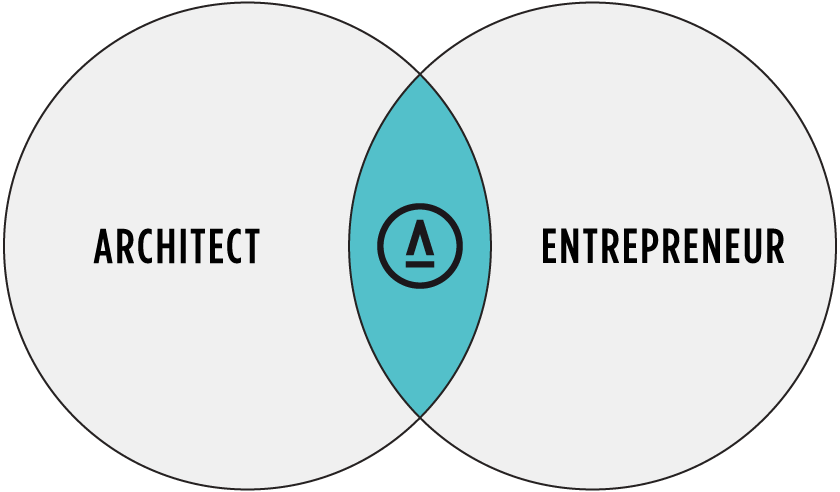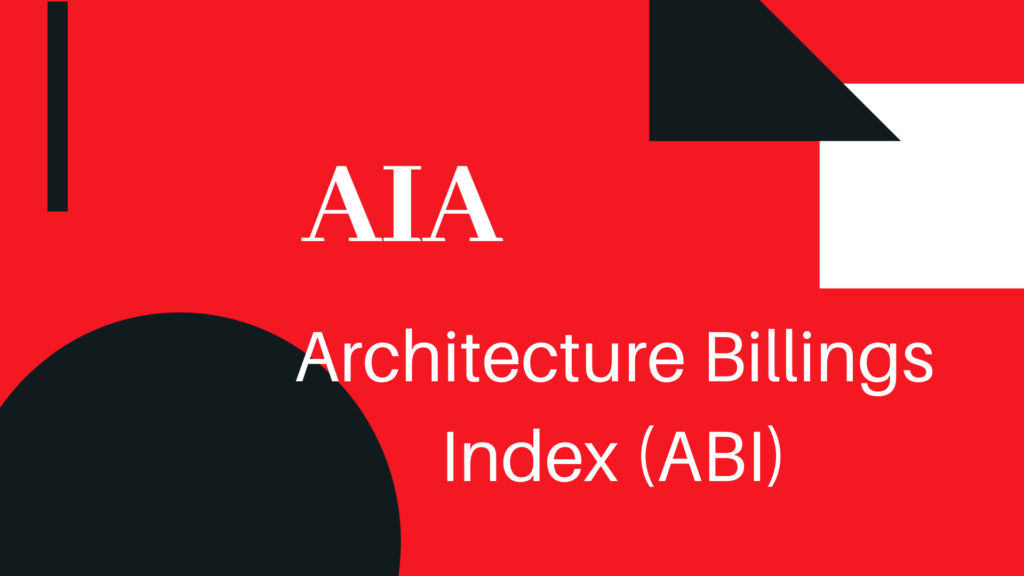Tag archives for: business

Architects must have a seat at the table when important civic decisions are made and must play a vital role in crafting public policy solutions that address the most prominent issues facing states and cities. By advocating solutions within the built environment to address issues like school safety, climate change, and affordable housing, architects are at the forefront of solving these critical challenges. The more architects work with state and local elected officials, the greater the positive impact on these and other important issues facing the profession, the business, and our communities.
Building codes & permitting
Up-to-date codes help save lives, improve building performance, and prevent damage from disasters. We work with our industry partners to develop model codes and assist in their adoption.
In 2007, we helped establish the federal 2030 net zero energy goals. Today, we continue to push for ways to achieve meaningful energy conservation. On the state and local levels, we are working with state governments and local communities to reduce energy use in new and existing buildings.
The permit review process can often cause unneeded and costly delays to projects. We provide models that can help reduce delays and advocate for legislation that streamlines the permitting processes.
Professional licensing
Architects are ethically and professionally responsible for protecting the health, safety, and welfare of the public in the built environment. We oppose efforts to weaken rigorous standards for architectural licensing and work to ensure that architectural services are only provided by individuals who have demonstrated competency through examinations, experience, and education.
Architects face encroachment from many individuals looking to carve out a piece of the design business for themselves. We provide resources to defend the value of our profession.
Qualifications-based selection
Would you choose your surgeon based on price alone? Of course not. Unlike procuring discrete products, selecting a skilled professional like an architect requires looking beyond just the price. We support a Qualifications-Based Selection process, which keeps the focus on quality and limits design competitions that force architects to provide services and expertise for free.
Strong, resilient communities
We champion livable communities. Places where it is easy to walk or bike to schools and grocery stores and where there is room for wildlife, culture, and sports. We support transportation and housing policies that repair crumbling infrastructure, revive historic neighborhoods, and create healthier places to live.
We work with communities and elected officials to protect what is unique, and we assist in resiliency planning and disaster recovery to ensure they can rise up again if the worst happens.
Taxes on architectural services
We work to create a business environment that helps firms focus on design. Over the years we’ve defeated tax hikes that hurt architects, pushed for reforms that treat small design firms fairly and worked to create an economic environment that allows members’ firms to grow.
Reprinted from AIA.org Website
AIA Legislation Link
aia
|
American Institute of Architects, architects, architecture, Building codes & permitting, business, Consulting For Architects, David McFadden, Professional licensing, resilient communities, State and Local Policy, Taxes on architectural services
|
Architecture offers promising growth opportunities for those who continuously learn and develop their skills. There are several paths for career advancement within the architecture profession, including:
- Obtaining licensure: Becoming a licensed architect opens up opportunities for career advancement, such as taking on leadership roles in firms or starting your practice.
- Pursuing specialized knowledge: Architects can pursue technical expertise in sustainable design, historic preservation, or healthcare design, leading to new career opportunities and higher salaries.
- Advancing to management or leadership roles: Architects can progress to management or leadership roles within firms, which can involve overseeing multiple projects or teams.
- Pursuing academic or research roles: Some architects seek educational or research roles in universities or research organizations, which can involve teaching or researching new design technologies and strategies.
- Starting their practice: Architects can start their practice and be free to take on the types of projects they are interested in and build their brand.
Overall, the architecture profession can provide numerous opportunities for growth and advancement. Still, it requires a commitment to continuous learning and staying up-to-date with new technologies and trends in the industry.

Architects are known for their creative and artistic abilities in designing beautiful and functional buildings, but they are also increasingly interested in the business and entrepreneurship aspects of their profession. As the architecture industry becomes more competitive and technology-driven, architects must develop a range of skills beyond design to succeed in the business world.
Architects who are interested in entrepreneurship are taking a proactive approach to grow their careers and building successful firms. They understand that business skills are essential for managing projects, attracting clients, and achieving financial stability. By developing an entrepreneurial mindset, architects can take advantage of new opportunities and stay ahead of the competition.
One key area of interest for architects is marketing. Architects who are skilled at marketing can effectively communicate their design vision to potential clients and stakeholders. They can also build their reputation and brand in the industry, which can lead to more business opportunities. Marketing can take many forms, from social media campaigns and website design to public relations and networking.
Financial management is another area of interest for architects who are interested in entrepreneurship. By understanding the financial aspects of running a business, architects can make informed decisions about project budgets, pricing, and cash flow. They can also develop strategies for managing risk and protecting their firm’s assets.
Project management is another area where architects can apply their business skills. Effective project management requires a range of skills, including communication, organization, and leadership. Architects who are skilled at project management can ensure that their projects are completed on time, within budget, and to the client’s satisfaction.
Finally, many architects are interested in innovation and technology. By keeping up with the latest advances in architecture and construction technology, architects can offer their clients cutting-edge solutions that are both efficient and sustainable. They can also leverage technology to streamline their business operations and improve their productivity.
In conclusion, architects who are interested in business and entrepreneurship are taking a proactive approach to build successful careers and firms. By developing a range of skills beyond design, including marketing, financial management, project management, innovation, and technology, architects can differentiate themselves in a competitive industry and offer their clients a range of valuable services.

Overall, an architect’s salary level has various factors playing a role, and architects must consider these factors when determining their earning potential.
The salary of an architect can vary widely depending on several factors, such as their experience, location, and the type of work they are engaged in. While some architects may earn lower salaries, there are several reasons why this may be the case:
- Supply and Demand: There are more architects than available positions, which can drive down salaries.
- Industry Competition: The architecture industry is highly competitive, and firms may be willing to hire less experienced architects at lower salaries.
- Project Budgets: Clients may have limited budgets for architectural services, which can result in lower fees for architects.
- Time and Effort: Architecture is a time-intensive profession that requires years of education and training. It can take a long time for an architect to become established and earn higher salaries.
- Public Perception: The public may not fully appreciate the value of architectural services, which can limit the amount that clients are willing to pay for them.
- Economic Factors: Economic downturns can also affect the demand for architectural services, reducing salaries in the field.
- Company Policies: No two firms’ compensation packages are alike. Choose a firm that wants to retain its employees over the long term and find a firm with good business acumen.
- Firm Size: Sole proprietors with one or two employees will deploy a different compensation package.
While architects certainly require artistic abilities to create beautiful and functional buildings, the success of an architectural practice also depends on its business acumen. Architecture firms must manage finances, attract clients, and navigate the legal and regulatory landscape like any other business.
Many successful architects are also skilled businesspeople. They understand how to market their services, manage finances, negotiate contracts, and navigate the industry’s complexities. They also have strong leadership and management skills, which are crucial for managing a team of professionals, overseeing multiple projects simultaneously, and building solid relationships with clients and contractors.
It’s worth noting that while artistic ability is a critical component of an architect’s skill set, it is not the only factor that determines their success. Good communication skills, problem-solving ability, attention to detail, and knowledge of technical requirements are also necessary. Additionally, architects must keep up with emerging technologies, sustainable design practices, and changing industry trends to remain competitive. In short, while artistic talent is essential to an architect’s skill set, successful architects must also have business acumen and leadership skills to thrive in their profession.

The salary of an architect can vary widely depending on several factors, such as their experience, location, and the type of work they are engaged in. While some architects may earn lower salaries, there are several reasons why this may be the case:
- Supply and Demand: There are more architects than available positions, which can drive down salaries.
- Industry competition: The architecture industry is highly competitive, and firms may be willing to hire less experienced architects at lower salaries.
- Project Budgets: Clients may have limited budgets for architectural services, which can result in lower fees for architects.
- Time and Effort: Architecture is a time-intensive profession that requires years of education and training. It can take a long time for an architect to become established and earn higher salaries.
- Public perception: The public may not fully appreciate the value of architectural services, which can limit the amount that clients are willing to pay for them.
- Economic factors: Economic downturns can also affect the demand for architectural services, reducing salaries in the field.
Overall, the salary of an architect can be influenced by various factors, and architects need to consider these factors when determining their earning potential. I know because I worked at several architecture firms before I started Consulting For Architects.
I am an artist, not a business expert.
While architects certainly require artistic abilities to create beautiful and functional buildings, the success of an architectural practice also depends on its business acumen. Architecture firms must manage finances, attract clients, and navigate the legal and regulatory landscape like any other business. Therefore, it is not necessarily true that architects are better artists than businesspeople.
Many successful architects are also skilled businesspeople. They understand how to market their services, manage finances, negotiate contracts, and navigate the industry’s complexities. They also have strong leadership and management skills, which are crucial for managing a team of professionals, overseeing multiple projects simultaneously, and building solid relationships with clients and contractors.
It’s worth noting that while artistic ability is a critical component of an architect’s skill set, it is not the only factor that determines their success. Communication skills, problem-solving ability, attention to detail, and knowledge of technical requirements are also necessary. Additionally, architects must keep up with emerging technologies, sustainable design practices, and changing industry trends to remain competitive.
In short, while artistic talent is certainly an essential aspect of an architect’s skill set, successful architects must also have business acumen and leadership skills to thrive in their profession.
Share your experience with me in the comment section, and I will respond.

Four in ten firm leaders report seeing an increase in delayed projects at their firm
Architecture firms reported ongoing softness in business conditions to close out 2022, as firm billings declined for the third consecutive month in December. However, the ABI score of 47.5 significantly delayed projects at their firm has been increasing over the last six months, while 30% reported that the share of indefinitely stalled projects has been increasing, and 21% indicated that the share of canceled projects has been increasing.
Overall, firms reported that an average of 13% of the projects at their firm over the past six months have been significantly delayed, 6% have been indefinitely stalled, and 3% have been canceled. Firms with a multifamily residential specialization have been most significantly impacted, as they reported that an average of 18% of their projects have been significantly delayed, in contrast to 15% of projects at firms with a commercial/industrial specialization and 9% of projects at firms with an institutional specialization. Firms located in the Northeast and West regions also reported a higher share of significantly delayed projects than firms in other regions.
Originally published by the AIA.
Continue reading

LEED (Leadership in Energy and Environmental Design) is a widely recognized and respected certification for environmentally sustainable building design and construction. Having a LEED credential can be valuable for architects and designers, as it demonstrates their knowledge and expertise in green building practices and can help them stand out in a competitive job market. Additionally, many building owners and developers are increasingly looking for professionals with LEED experience or certification, as it can help them meet their own sustainability goals and comply with local regulations. However, the value of a LEED credential may vary depending on the region and the specific market.
LEED (Leadership in Energy and Environmental Design) certified buildings are structures that have been designed, constructed, and operated in an environmentally responsible manner. They are designed to use less energy, water, and other resources, and to produce less waste and pollution. To become LEED certified, a building must meet certain standards set by the U.S. Green Building Council (USGBC), a non-profit organization that develops and maintains the LEED rating system.
LEED certification is based on a point system, with buildings earning points for meeting various sustainability criteria in categories such as energy efficiency, water efficiency, materials and resources, indoor environmental quality, and innovation in design. The building is then awarded a certification level based on the number of points earned: LEED Certified, Silver, Gold, and Platinum.
LEED certified buildings can include a variety of structures, such as office buildings, homes, schools, hospitals, retail spaces, and more. These buildings are designed to be more energy-efficient, use less water, promote better indoor air quality and reduce waste, and they provide a healthier, more productive environment for the people who use them.
There are several ways to find the best place to get LEED certified. Some steps you can take include:
- Research different training providers: Look for providers that offer LEED-specific training, have certified instructors, and provide study materials such as practice exams and flashcards.
- Look for providers with a good reputation: Check out online reviews and testimonials to get an idea of the quality of the provider’s training.
- Look for providers that offer different study options: Some providers offer in-person, online, or self-paced study options to fit your schedule.
- Check if the provider is authorized by the Green Business Certification Inc (GBCI) or other related bodies to deliver the training and the certification.
- Consider the cost and location of the training provider: Compare the costs and locations of different providers to find one that fits your budget and is convenient for you to attend.
- Look for providers that also offer continuing education hours for maintenance of the certification
It is important to keep in mind that LEED certification is a continuous process, in order to maintain the certification, the building must meet the standards of the certification level, and the certification holder must follow the continuing education requirements.
#LEED #Buildings #Certification #Certified #CBCI #USGBC #Architects #Designers
Helpful Links and Resources:
LEED Rating System
What is LEED Certification
Green Business Certification

What started as a comment has become a short post in response to an opinion article by Adam Greenfield in the current edition of Dezeen online titled “All those complicit in Neom’s design and construction are already destroyers of worlds.”
In Sum.
• Adam Greenfield’s opinion article titled “All those complicit in Neom’s design and construction are already destroyers of worlds” argues that anyone who accepts money to work on any aspect of the Neom project is automatically complicit in everything that the project does.
• I disagree with this opinion. I believe that everyone is responsible for choosing which parts they work on and to what extent. If they are not comfortable with a particular aspect of the project, they can always decline to work on it or limit their involvement.
• Architecture is often seen as a symbol of power and authority, but it can also be seen as a reflection of the political and economic ideologies of the society in which it is built. In some cases, architecture may even help to shape these ideologies.
• The author paints architects who accept commissions with a broad brush when reality shows that many architects are conscious of ethical implications in their projects.
I disagree that if you accept money to work on any aspect of the Neom project, you need to know that you are complicit. I believe in and support many parts of the project, and I would gladly accept compensation for my work on those aspects. I do not think that taking money makes me automatically complicit in everything that the project does; it is my responsibility to choose which parts I work on and to what extent. If I am not comfortable with a particular aspect of the project, I can always decline to work on it or limit my involvement. Ultimately, it is up to each individual to decide whether or not they want to accept money to work on the Neom.
Architecture is often seen as a symbol of power and authority. This is especially true of traditional, classical architecture, which is often associated with authoritarian regimes such as the Roman Empire or the British monarchy. However, architecture is also drawn to capitalist and socialist governments. In capitalist societies, architecture is often seen as a way to make money and attract investment. In contrast, in socialist societies, it is seen as a way to improve the lives of citizens and promote equality.
Architecture can therefore be seen as a reflection of the political and economic ideologies of the society in which it is built. In some cases, architecture may even help to shape these ideologies. For example, the Bauhaus design school was founded in Germany in the 1920s to combine art and industry. This was when the country was undergoing a period of political and economic change, and the Bauhaus school helped shape the new German identity. Similarly, post-modern architecture emerged in the 1970s as a reaction to the modernist movement dominating architecture.
Noem’s cutting-edge Line project is about new tech and inventions to tackle global warming, setting a new benchmark for future urban cities. The developers and architects are a small part of the project team, which includes futurists, scientists, inventors, engineers, and artists. Their innovative approach means that the line project will not contribute to global warming but instead help fight it. This is a crucial step in the right direction. The Neom team is passionate about making a difference and ensuring that our planet has a bright future. We believe that through technology and innovation, we can make this happen.
The author paints the architects that accept commissions with a broad brush when the reality is much more nuanced. As such, it is essential to consider the ethical implications of their work. This includes whether or not they are contributing to the displacement of indigenous peoples or exacerbating climate change.
While it is easy to paint all architects and the commissions they earn with a broad brush, the reality is much more nuanced. Many architects are conscious of the ethical implications of their work and make an effort to minimize the negative impact of their projects.
It is essential to hold all architects accountable for the societal implications of their work. But it is also important to remember that not all architects are the same. Some are working to make a positive difference in the world. Knowing that sitting on the sidelines affects nothing Morphosis, Zaha Hadid Architects and other studios committed to the Neom project can sleep well tonight.
ABOUT THE AUTHOR
After working at various design practices on a full-time and freelance basis and starting his design firm, David McFadden saw a gap to fill in the industry. In 1984, he created an expansive hub for architects and hiring firms to sync up, complete projects, and mutually benefit. That hub was Consulting For Architects Inc., which enabled architects to find meaningful design work while freeing hiring firms from tedious hiring-firing cycles. This departure from the traditional, more rigid style of employer-employee relations was just what the industry needed – flexibility and adaption to current work circumstances. David has successfully advised his clients and staff through the trials and tribulations of four recessions – the early ’80s, the early ’90s, the early 2000s, the Great Recession of 2007, and the Pandemic.
Op-Ed
|
AdamGreenfield, AllthosecomplicitinNeomsdesignandconstructionarealreadydestroyersofworlds, architects, architecture, bauhaus, business, cities, Consulting For Architects, David McFadden, design, dezeen, futurists, globalwarming, jobs, Line, Morphosis, Noem, Saudi, urban, zahahadid
|

Flex-core staffing is an excellent way for architecture firms to break the hiring-firing cycle, increase their firm’s bottom line, and keep their employees happy. By hiring temp architects to fill in the peaks and valleys that always occur, firms can keep their core staff intact and avoid the need to engage and fire employees constantly. This practice can save firms both time and money, and it can also help them maintain a higher level of quality control.
Few things are more costly to a business than the hiring and firing cycle. Not only does it take a toll on your human resources department, but it can also significantly impact your bottom line.
Fortunately, there are ways to break the cycle and improve your financial situation. You can improve your bottom line and increase profits by taking some simple steps.
1. Review your hiring practices. Poor hiring practices are the most common causes of the hiring and firing cycle. If you’re constantly hiring and then firing employees, it’s time to take a closer look at your process. Are you screening applicants properly? Are you asking the right questions?
2. Train your managers. Another common cause of the hiring and firing cycle is poor management. If your managers constantly have to deal with employee issues, it’s time to give them some training. Teach them how to manage their teams and handle conflict appropriately.
3. Communicate with your employees. One of the best ways to avoid the hiring and firing cycle is to communicate with your employees. Let them know what your expectations are, and give them regular feedback. This will help them understand what they need to do to meet your standards.
4. Be consistent with your policies. You must comply with your policies to avoid the hiring and firing cycle. Make sure that everyone in your company knows your procedures and that they are followed. This will help to create a sense of stability and reduce the need for turnover.
5. Offer incentives. Another great way to avoid the hiring and firing cycle is to offer incentives for good performance. If you have employees who consistently meet or exceed your expectations, offer them a bonus or other incentive. This will show them you’re serious about their work and appreciate their efforts.
These simple steps can break the hiring and firing cycle and improve your bottom line. Implement these tips in your business today and see the difference it makes.
There are many ways to increase an architecture firm’s bottom line. One way is to increase the number of projects that the firm takes on. Another way is to increase the fees that the firm charges. Still, another method is to cut costs.
One way to increase an architecture firm’s bottom line is to increase the number of projects that the firm takes on. This can be done by marketing the firm more aggressively or by expanding the geographic areas that the firm serves.
Another way to increase an architecture firm’s bottom line is to increase the fees that the firm charges. This can be done by expanding the firm’s service rates or adding new services that command higher fees.
Still another way to increase an architecture firm’s bottom line is to cut costs. This can be done by streamlining the firm’s operations, eliminating unnecessary expenses, or finding ways to save on materials and labor.
Increasing an architecture firm’s bottom line can have many benefits. It can improve the firm’s financial health, allow the firm to hire more staff, and enable the firm to expand its services. Taking steps to increase an architecture firm’s bottom line can help the firm become more prosperous.
ABOUT THE AUTHOR
After working at various design practices on a full-time and freelance basis and starting his design firm, David McFadden saw a gap to fill in the industry. In 1984, he created an expansive hub for architects and hiring firms to sync up, complete projects, and mutually benefit. That hub was Consulting For Architects Inc., which enabled architects to find meaningful design work while freeing hiring firms from tedious hiring-firing cycles. This departure from the traditional, more rigid style of employer-employee relations was just what the industry needed – flexibility and adaption to current work circumstances. David has successfully advised his clients and staff through the trials and tribulations of four recessions – the early ’80s, the early ’90s, the early 2000s, the Great Recession of 2007, and the Pandemic.
Hiring trends
|
architects, architecture, business, Consulting For Architects, design, employees, firing, firms, flex, Hiring, human, Interviewing, jobs, Labor Market, manage, porfolio, resources, resume, screening, staffing
|

Successful architecture careers don’t happen by accident. Just like well-designed buildings, they’re the result of careful planning.
While there are countless metrics you can consider when going about this planning, one of the most important is the city within which you’ll work.
That’s why we’ve put together a list of the three best cities in the country for professionals who are serious about pursuing successful architecture careers.
We based this list on the all-important factor of salary but also on other unique traits worth considering.
1. Atlanta, Georgia
Georgia is one of the best states for architects, so it should come as no surprise that many point to its capital as the best city for this profession.
Even though Atlanta is home to countless high-paying careers, architects are among the top 50 best-paid. Architectural managers even crack the top 20, alongside lawyers, several doctors, and even physicists.
Of course, Atlanta also has an impressive history of hosting incredible buildings from a number of different styles, so you won’t be lacking for inspiration. That said, you won’t be lacking for competition, either. Atlanta is home to a few award-winning architects, though that also means plenty of impressive firms looking for new talent.
2. West Palm Beach, Florida
Located about an hour-and-a-half north of Miami, West Palm Beach has plenty going for it aside from the incredible weather. On average, the highest-paid architects in the country call West Palm Beach home. That average salary is an impressive $120,380 a year. Florida does not have a State income tax either.
The city is also full of architecture firms – well over three dozen of them – so you shouldn’t have too much trouble beginning your job search.
Many world-class architects choose West Palm Beach for their headquarters because there is no lack of developers with large budgets who appreciate beautiful designs.
The city also attracts talent from across the world for the same reason. As just one example, look no further than the $100-million expansion of the Norton Museum, which was designed by Norman Foster, a winner of the Pritzker Architecture Prize.
3. Chicago, Illinois
For our third spot on the list, we head north to the Windy City. Chicago’s history as a city of architectural wonders probably began in 1893 during the World’s Fair. It debuted the first ever Ferris Wheel but also brought in some of the time’s most prominent architects to contribute their talents.
Though only one major structure survived, Chicago’s tradition of welcoming incredible architects has carried on. Over the years, famous architects like William Le Baron Jenney and Frank Lloyd Wright have all left their mark on Chicago.
Modern architects looking to do the same won’t be disappointed. While the pay isn’t as much here, the cost of living is also much lower, meaning your salary will stretch a lot further.
Work with Experts Who Specialize in Launching Architecture Careers
Want more help getting your career off the ground?
At Consulting For Architects, we specialize in both project placement and permanent placement for professionals who are dedicated to pursuing successful architecture careers. If you’d like the help of an experienced team of experts, please feel free to contact us today.
















